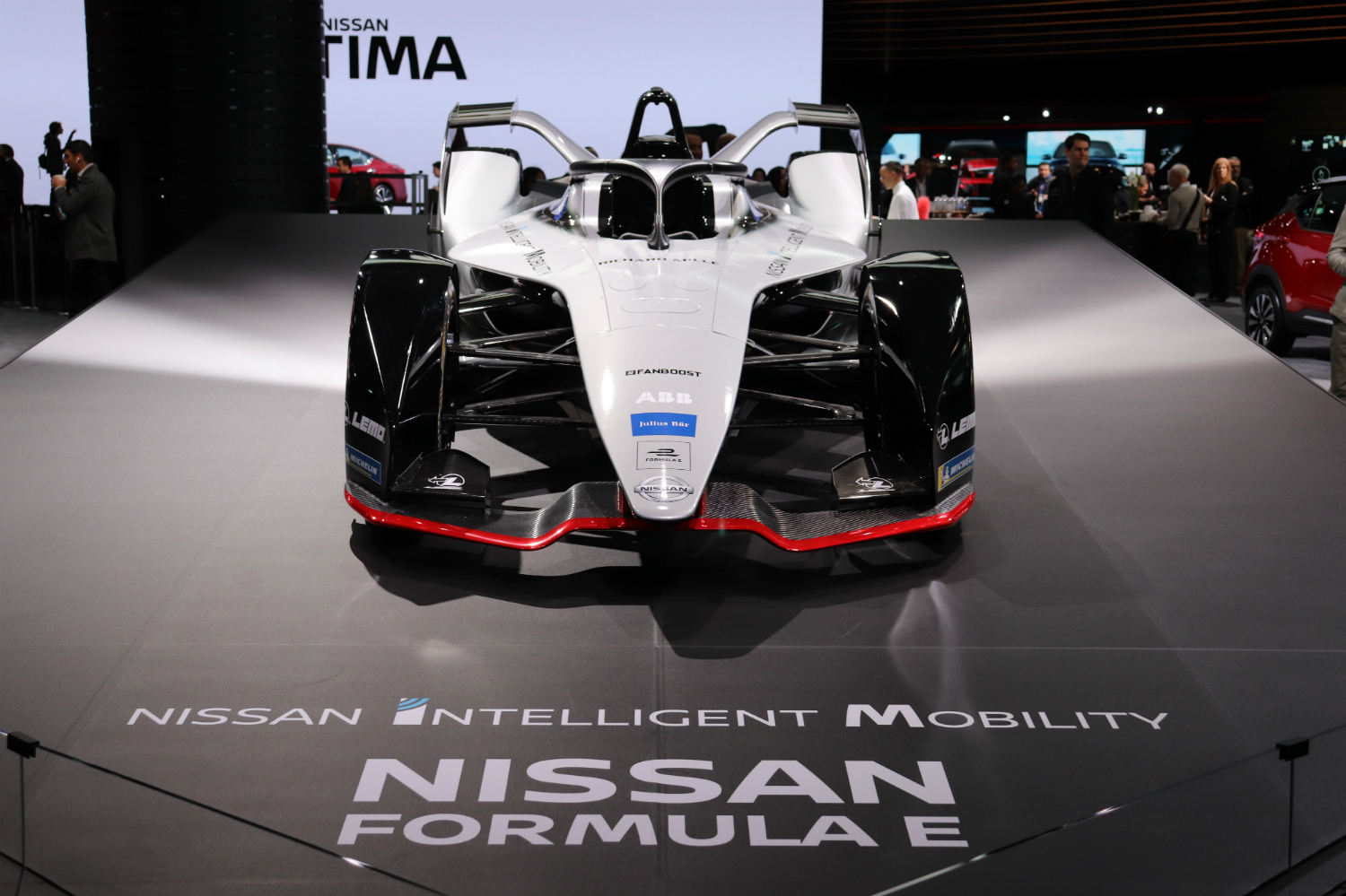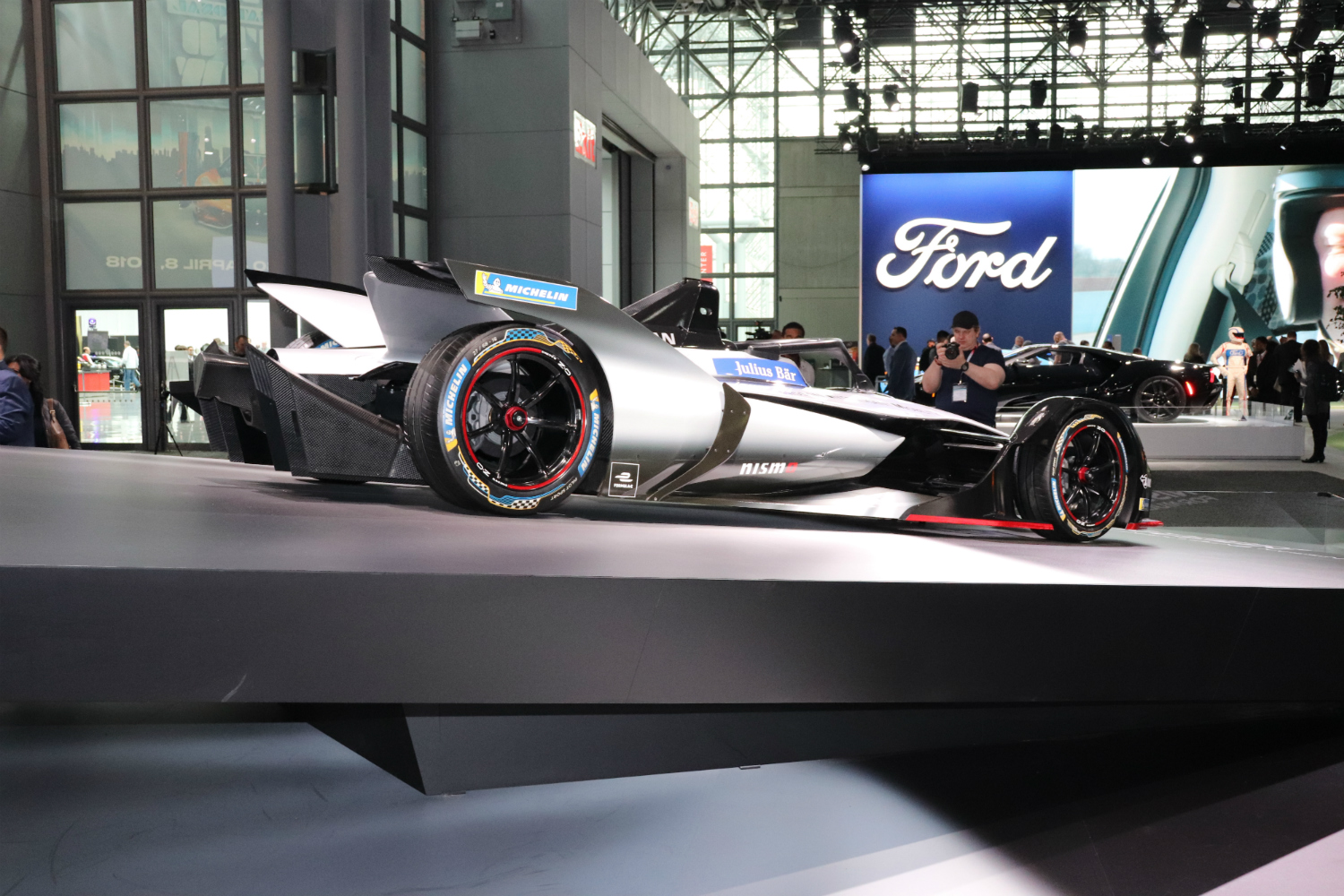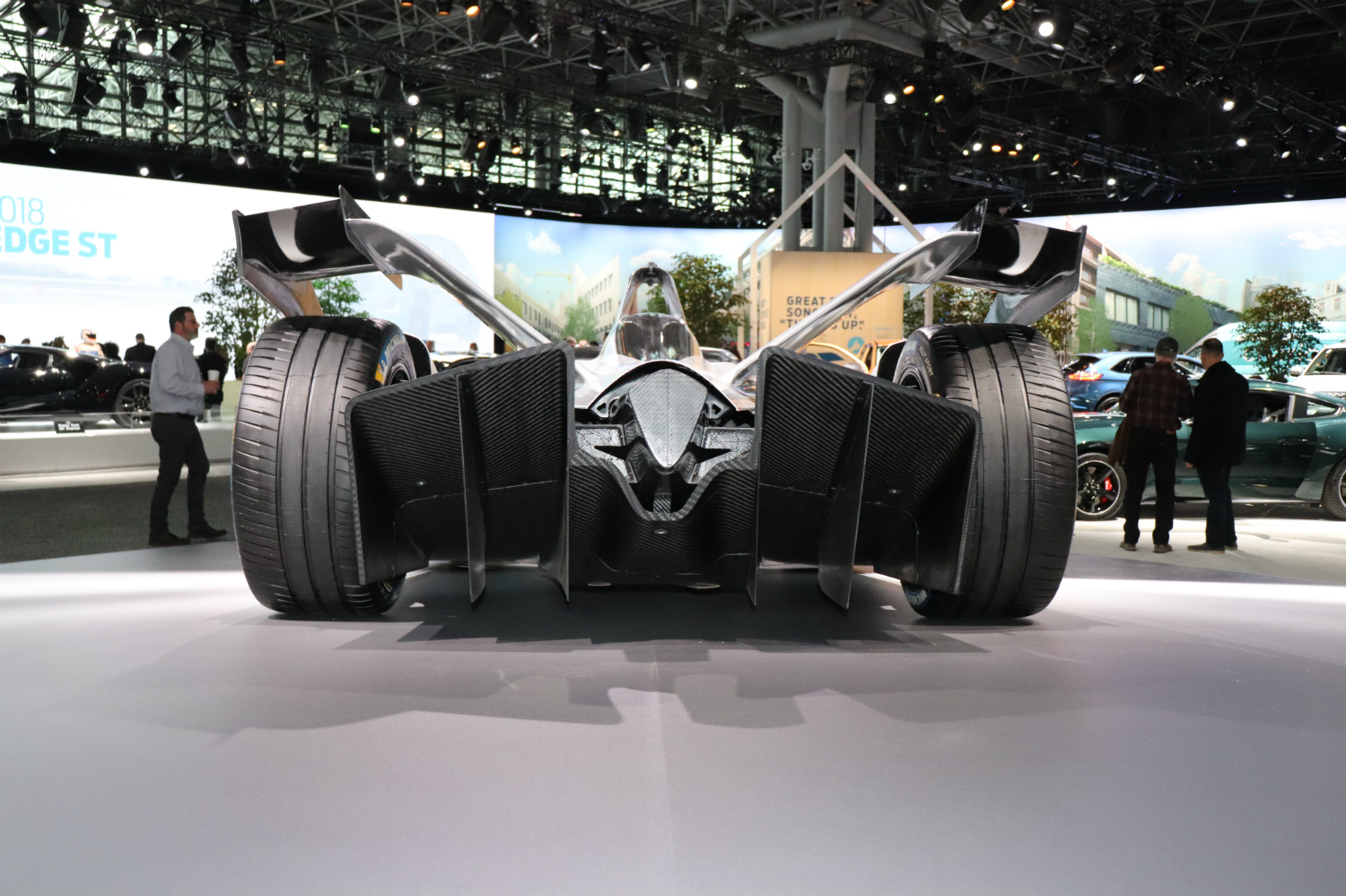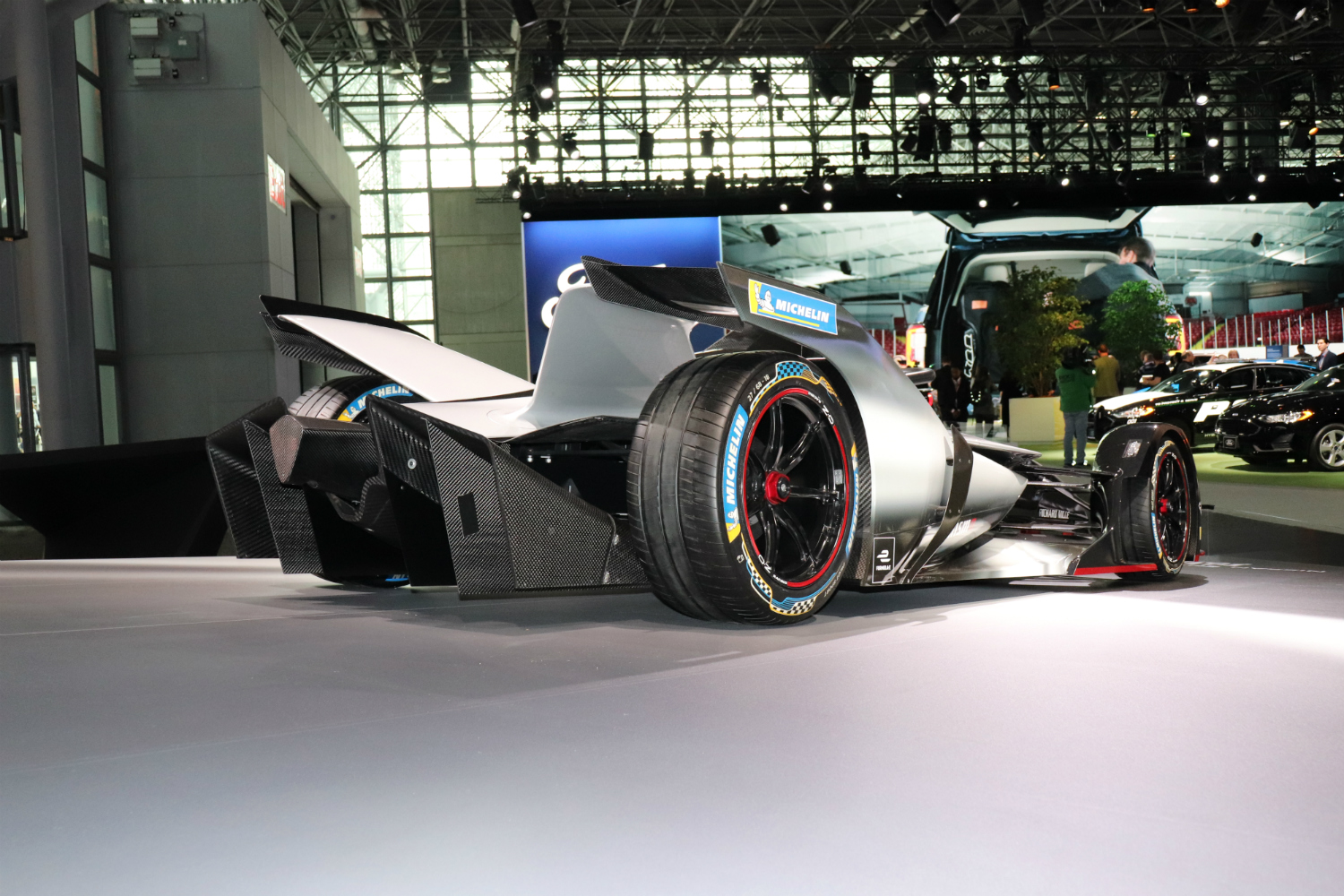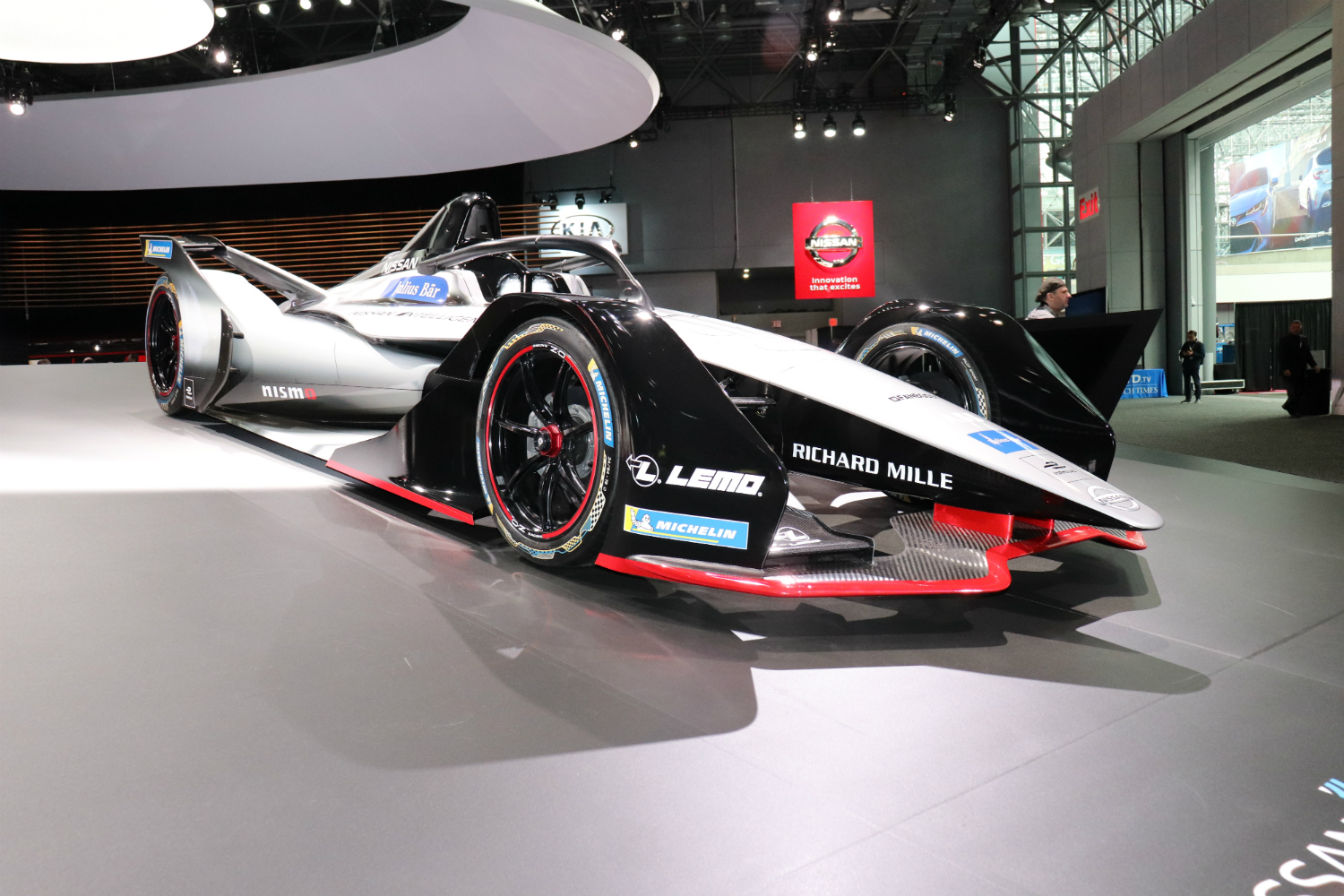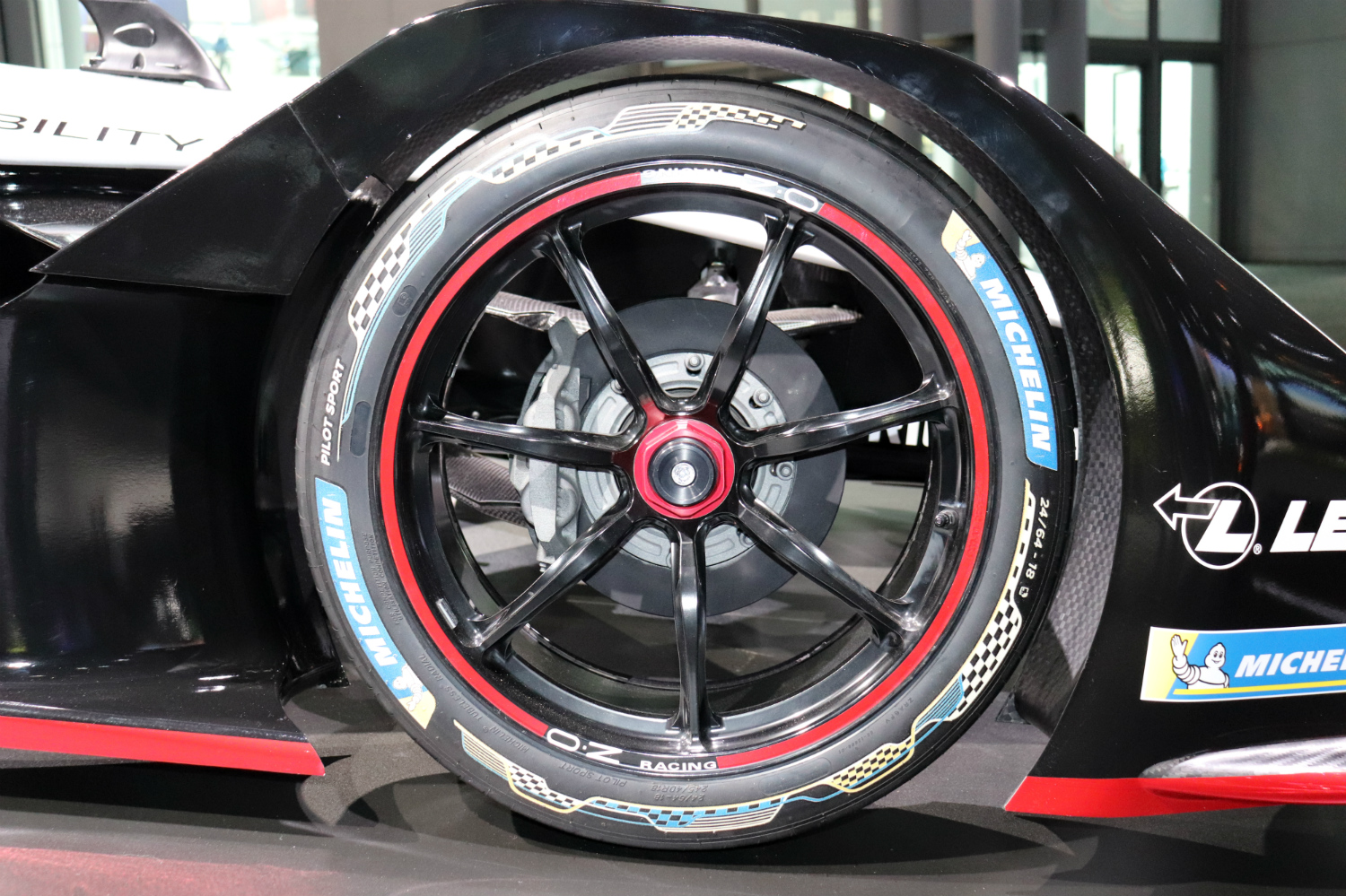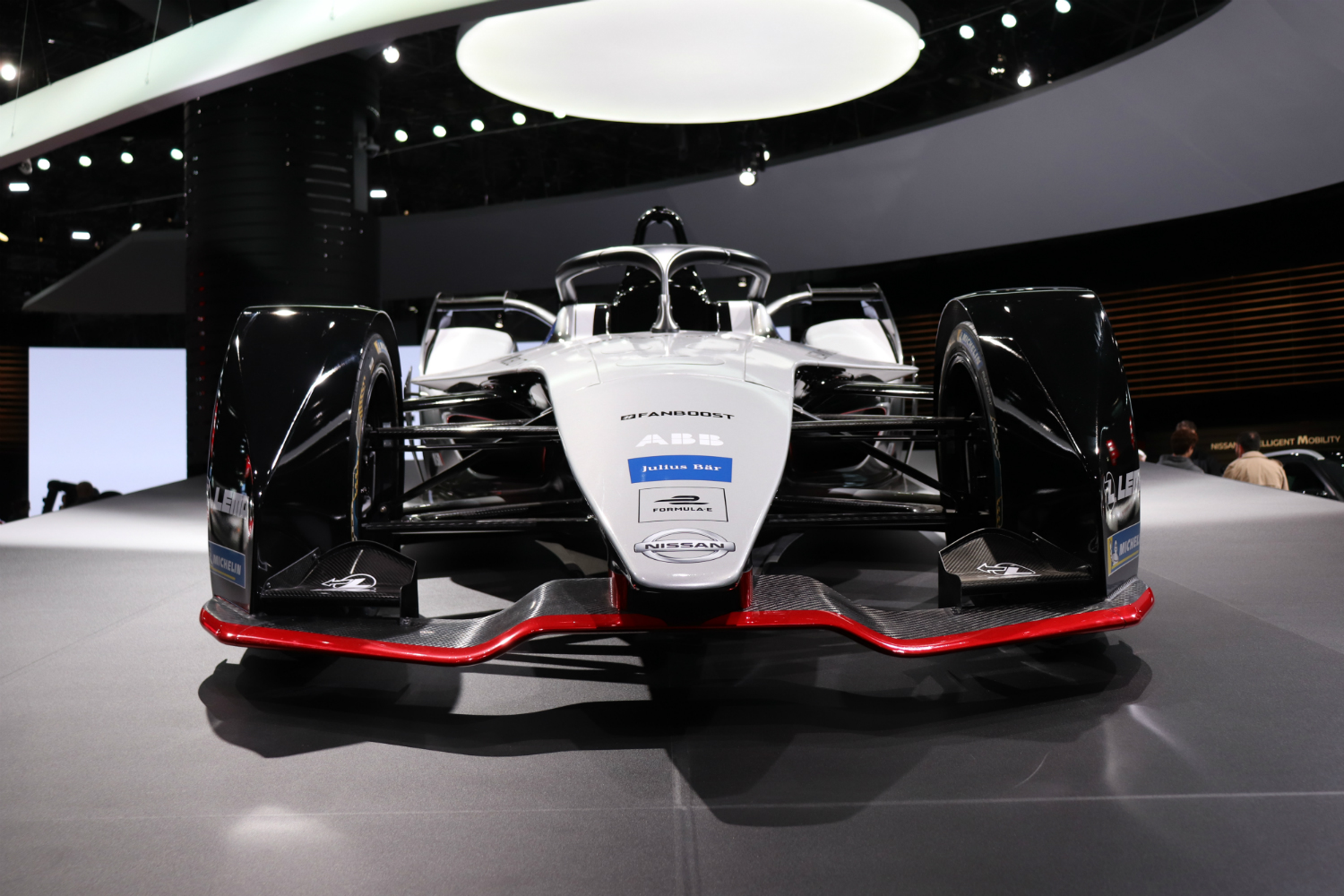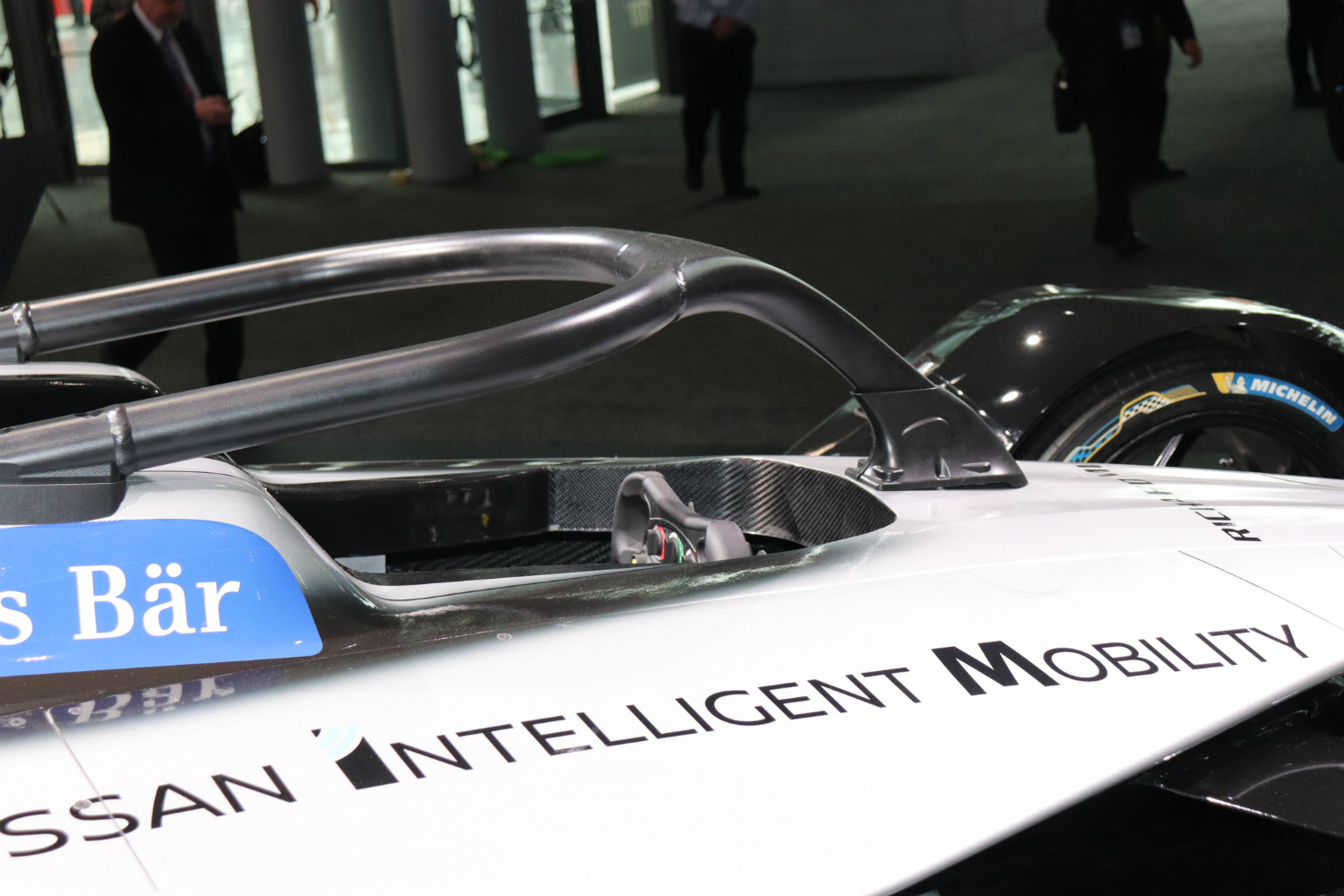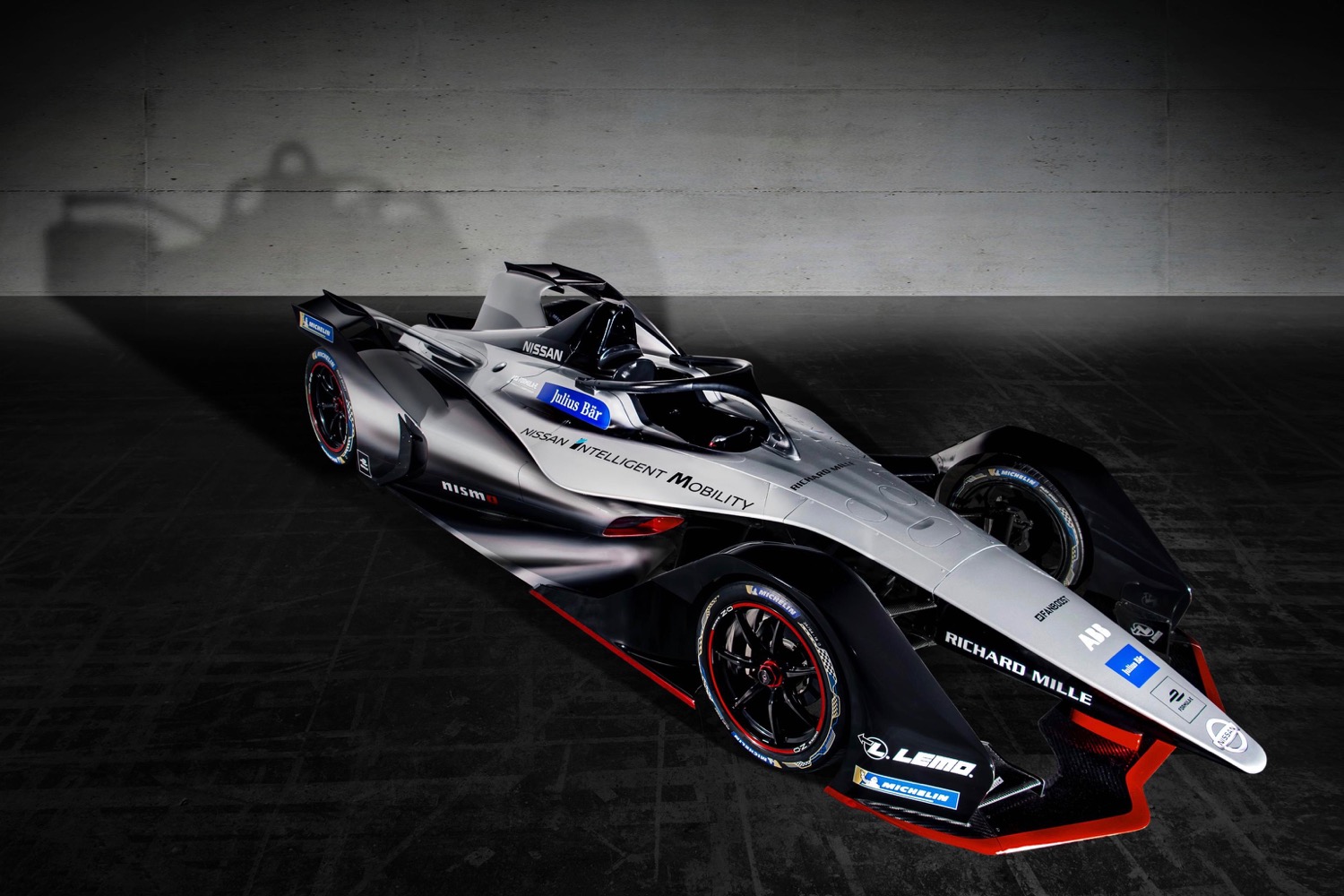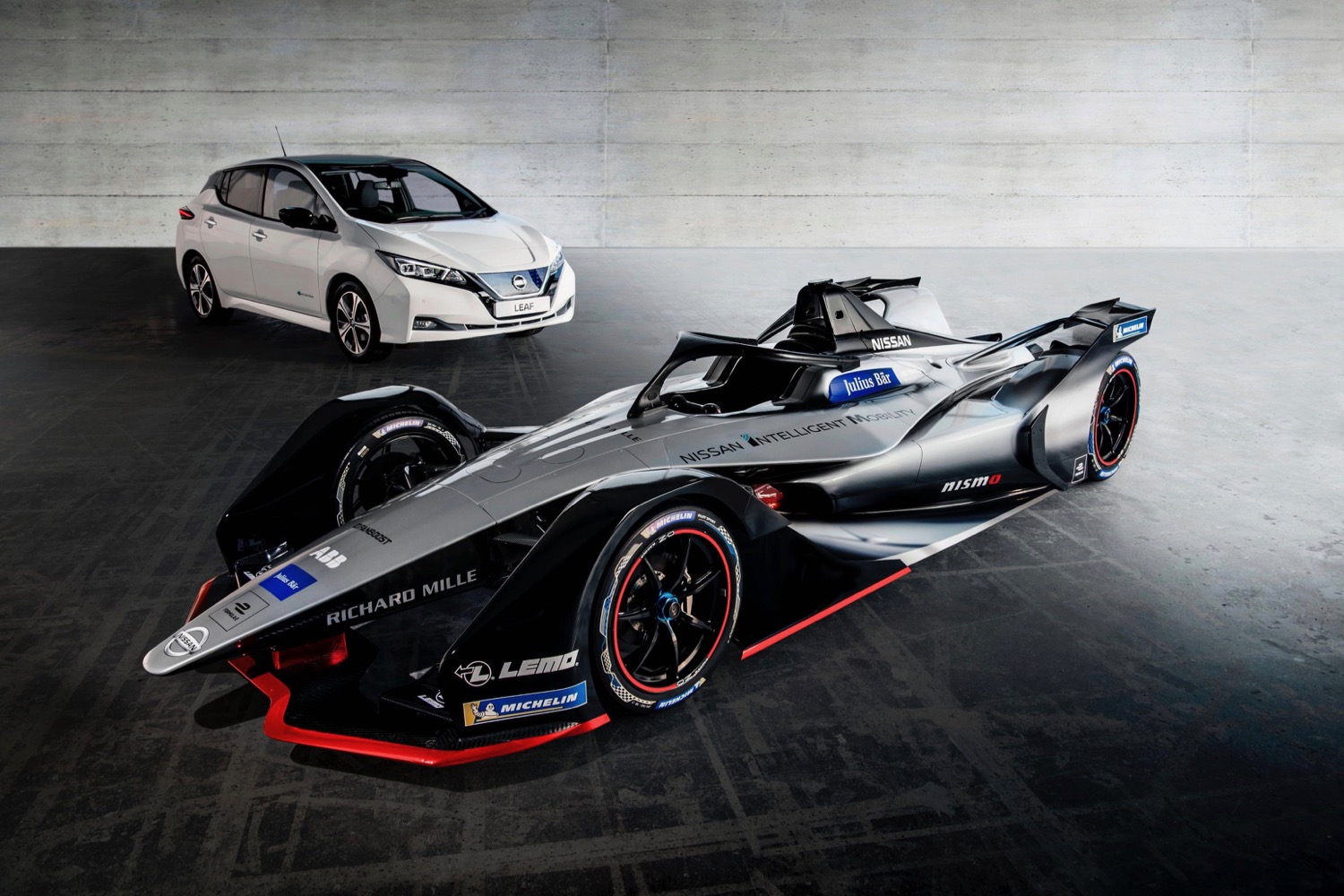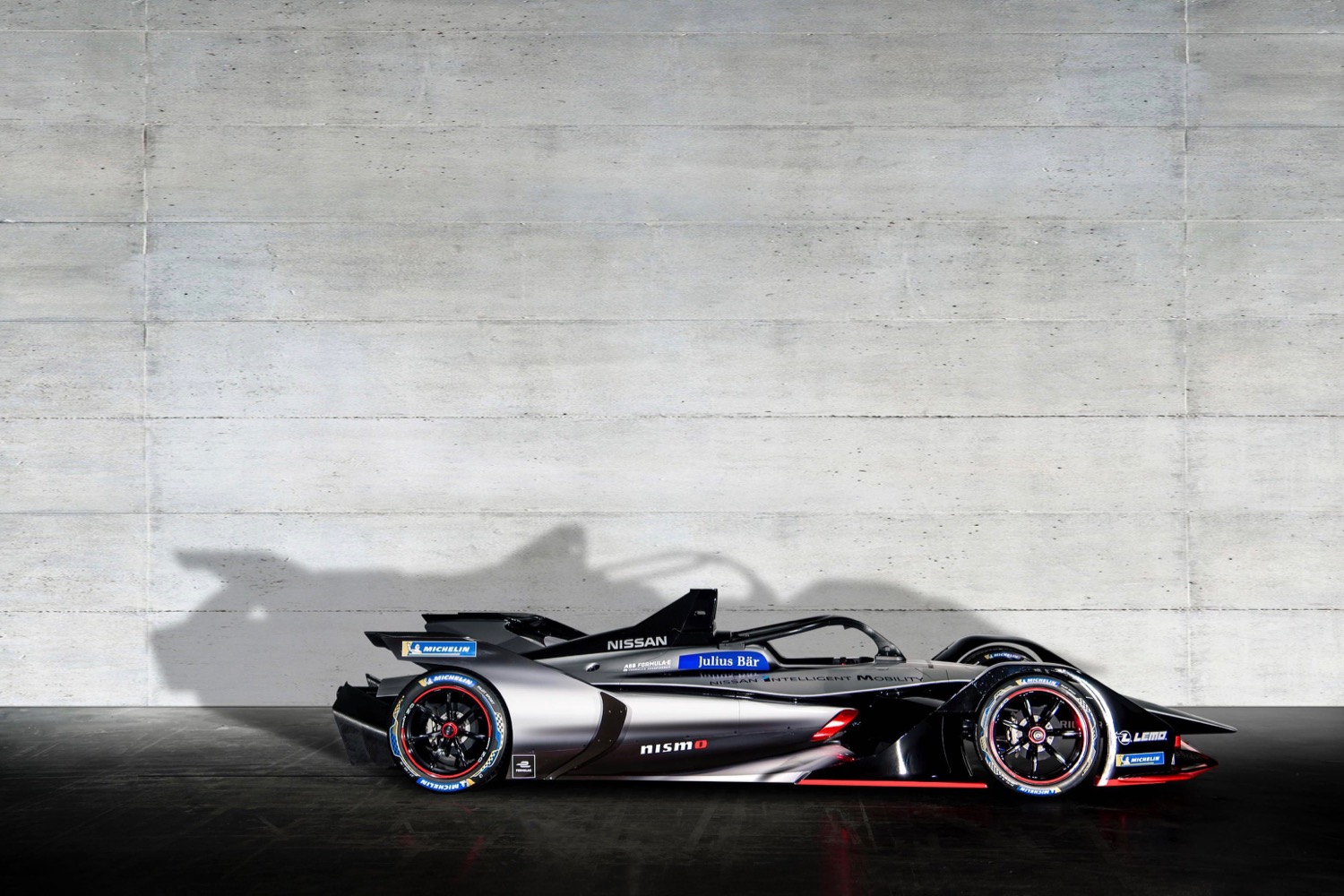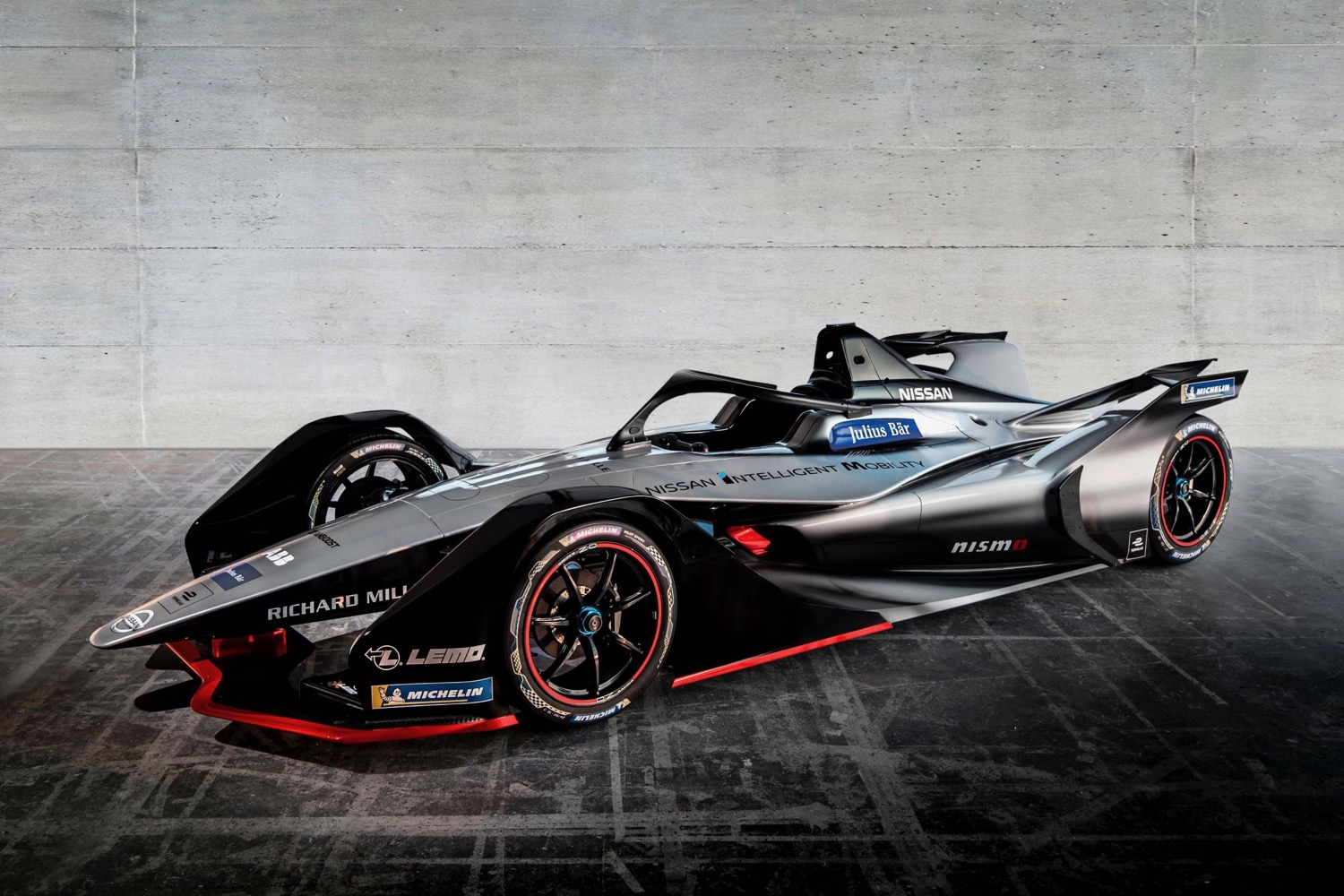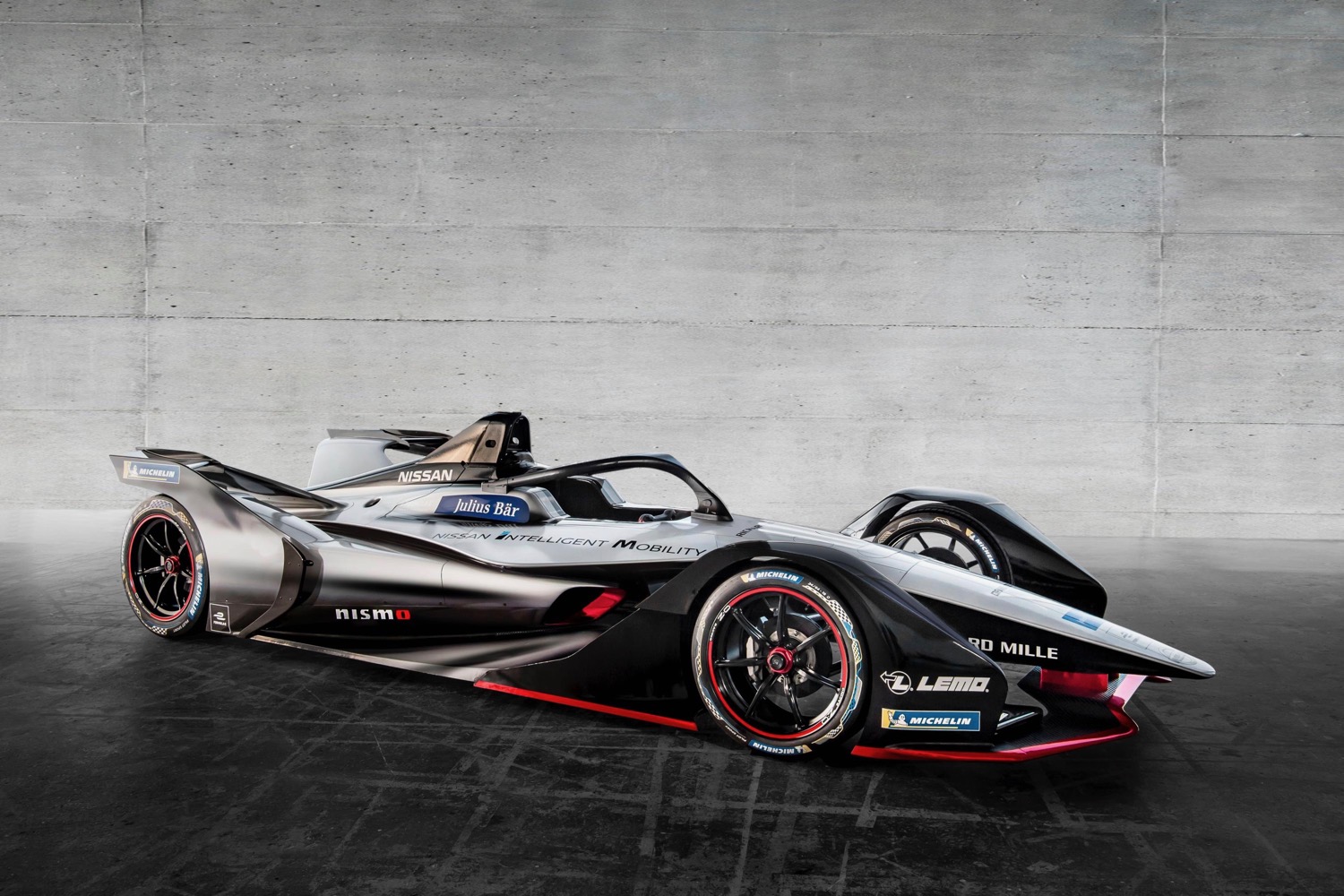While the Nissan Leaf is the bestselling electric car in history, Nissan has been conspicuously absent from Formula E, the first major race series for electric cars. That will change later this year when Nissan joins Formula E for the series’ fifth season. The Japanese automaker unveiled its Formula E race car at the 2018 Geneva Motor Show, and Digital Trends was live at the 2018 New York Auto Show for its Big Apple debut.
All Formula E teams use the same basic chassis, which is completely redesigned for the upcoming season. The second-generation Formula E car incorporates the “halo,” a protective hoop around the cockpit meant to protect the driver’s head that is also being implemented in Formula One. The new electric race car also has a battery pack large enough to run an entire race on one charge. Drivers currently run half the race in one car and then switch to another because of the lack of range.
Like all other teams, Nissan wasn’t allowed to change the body of the car, other than applying its own livery, that is. The battery pack is standardized as well, although teams are allowed to go their own way when it comes to other aspects of the powertrain. The restrictions are meant to keep costs down, and ensure a level playing field. Organizers want to avoid the current situation of Formula One, where a handful of wealthy teams dominate the field by outspending their poorer rivals.
Nissan may be the newest Formula E competitor, but it has a big head start. That is because it will be able to lean on the expertise of partner Renault, which has won the team championship in every Formula E season so far. Nissan is replacing Renault in the series, so the French automaker’s experience will likely be directly applied to the new Japanese team in order to make it competitive out of the gate.
Automakers are flocking to Formula E in order to project a greener image and to prove they are serious about selling electric cars to the public. Audi and BMW are stepping up their involvement in the series, and Porsche and Mercedes-Benz will join soon. Nissan has sold enough Leafs to prove that it is serious about electric cars, but racing might add a bit more excitement to the automaker’s electrification efforts.
